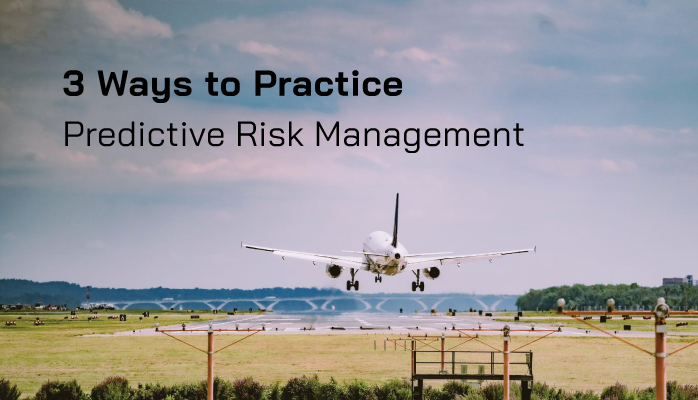What Is Predictive Risk Management?

Proactive and predictive risk management are difficult to separate. Proactive risk management identifies safety concerns before events occur. Predictive risk management aims to predict future risk based on past performance data.
Predictive risk management is a blending of reactive and proactive strategies. Safety teams can uncover potential risks by examining data and making predictions.
For predictive risk management to work, your operation needs strong operational processes. You’ll also need historical data on which to base predictions. A strong understanding of human factors will help as well.
Here, we’ll examine three methods of predictive risk management.
Safety Cases

Develop safety cases to address critical areas of the operation. These safety cases showcase operational safety and integrity. By examining operations and programs, safety teams provide concrete evidence of their value.
These safety cases can also be invaluable in the case of an accident or another occurrence. Safety cases can prove that your organization was not negligent.
A safety case should include the following components:
- introduction and management summary
- SMS description of the safety case
- critical activities catalog
- operations covered by this safety case
- hazards and effects management
- remedial action plan
- conclusion and statement of fitness
Management of Change
MOC, or management of change, is another tool in predictive risk management. MOC provides a structured, repeatable process for making changes within your organization. Using a MOC brings risk management to the forefront of the planning process.
MOC takes into account the stakeholders and processes affected by the change. This view allows teams to foresee risk and put control measures in place from the beginning.
Designing a change with safety in mind this way is efficient and productive. By reducing the risk in advance, your organization saves time, money, and resources.
Related Aviation SMS Management of Change Articles
- Understanding Management of Change in Aviation SMS
- 3 Tips for Effective Management of Change Projects in Aviation SMS
- Relationship Between Management of Change, SA Process, and SRM Process
Hypothetical Scenario Analysis
A hypothetical scenario analysis is a type of stress test. Choose a scenario that is extreme but plausible and test how your system would react.
Choosing the right scenario is key. If the severity is high, it's a good candidate for hypothetical scenario analysis.
Scenario analysis can incorporate statistics and advanced models based on historical data. It can also be more simple.
Ask yourself, what’s the worst that could happen? Work from there to find if there are measures in place for if it did happen.
Your Experience With Predictive Risk Management
How does your organization practice predictive risk management? What’s working and what’s a waste of time? Let us know in the comments below.
Last updated February 2025.






